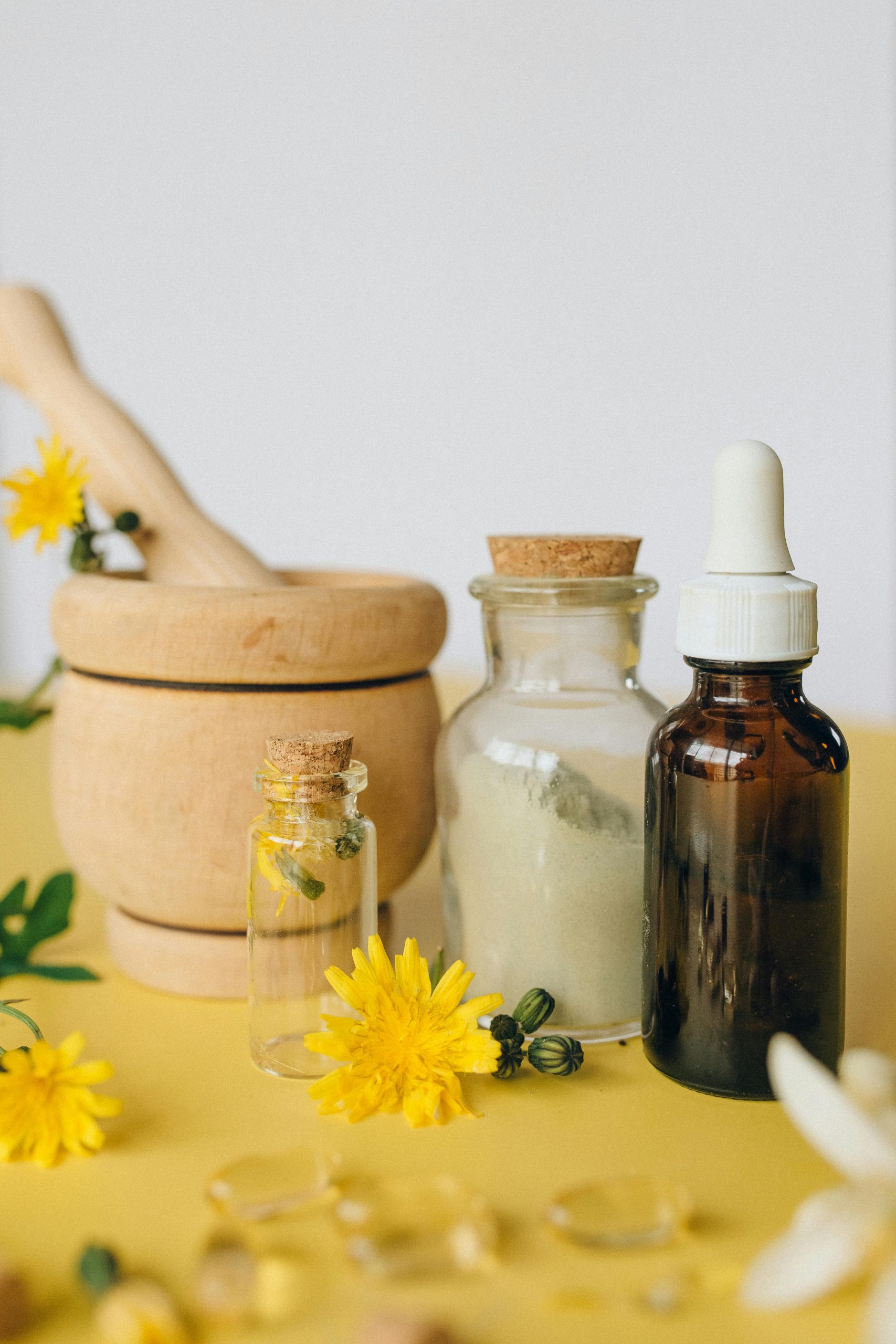Introduction to Natural Remedies for Childhood Ailments

Common childhood ailments like colds, coughs, and stomach aches are almost a rite of passage for the little ones. As these minor maladies weave through their early years, a growing number of parents are leaning towards natural and home remedies. This shift is not just about tradition; it’s about embracing gentler alternatives that harmonise with our bodies’ innate healing abilities. Yet, amidst this natural renaissance, it’s paramount to remember the importance of consulting healthcare professionals. Their guidance ensures that our natural interventions are both safe and effective, providing our children with the best care possible. This blend of ancient wisdom and modern medicine offers a balanced approach to nurturing our children’s health and well-being.
The Role of Nutrition in Preventing and Managing Childhood Ailments

Nutrition plays a pivotal role in fortifying our children’s immune systems, arming them against common ailments. A diet rich in fruits, vegetables, and whole foods is not just about good eating habits; it’s a cornerstone of their health. These natural powerhouses are brimming with essential nutrients that bolster the body’s defences.
- Boosting the Immune System: Incorporating a variety of colourful fruits and vegetables into a child’s diet ensures they receive a broad spectrum of vitamins and minerals. These nutrients are crucial for maintaining a robust immune system, capable of warding off infections. Whole foods, unprocessed and rich in fibre, further support gut health, a vital aspect of immunity.
- Specific Nutrients and Their Benefits: Vitamin C, found abundantly in citrus fruits, strawberries, and capsicums, is renowned for its immune-boosting properties. Zinc, present in meat, dairy, and legumes, plays a critical role in immune function and wound healing. Probiotics, the beneficial bacteria in yoghurt and fermented foods, enhance gut health, further supporting the immune system. These specific nutrients are key players in the prevention and management of childhood ailments.
- Hydration’s Key Role: Hydration is often overlooked, yet it’s fundamental in recovery and maintaining health. Adequate fluid intake ensures the body functions optimally, aids in temperature regulation, and helps to flush out toxins. Encouraging children to drink water regularly, and offering hydrating fruits and vegetables, can significantly aid in their overall well-being and resilience against illnesses.
Embracing a diet rich in nutrients and keeping hydrated are simple, yet effective strategies in preventing and managing common childhood ailments. This natural approach not only supports immediate recovery but also lays the foundation for a lifetime of good health. As we explore natural remedies, let’s not forget the profound impact of nutrition on our children’s well-being.
Herbal Remedies and Their Applications

Turning to nature’s pharmacy, herbal remedies offer a comforting bridge between tradition and modern healthcare. Among these, ginger stands out for its efficacy in soothing nausea and digestive discomfort. A simple ginger tea can work wonders for a queasy stomach, making it a go-to for parents dealing with motion sickness or mild tummy troubles in children.
- Echinacea, with its vibrant purple flowers, is another herbal ally. Research suggests it may shorten the duration and severity of colds, offering a natural boost to the immune system when symptoms first appear. While not a cure-all, Echinacea’s potential in reducing cold symptoms is a valuable tool in a parent’s natural remedy kit.
- For nights filled with restlessness, chamomile tea is a gentle, calming option. Its mild sedative effects can help ease children into a peaceful sleep, making it a favourite among parents for its safety and effectiveness in promoting relaxation and aiding sleep.
However, safety is paramount. Herbal remedies, while natural, are not without their risks. It’s essential to adhere to recommended dosages and consult healthcare professionals, especially when treating children. This ensures that these natural interventions complement their health without unintended consequences. For more detailed guidance, visiting reputable sources such as the National Center for Complementary and Integrative Health can provide valuable insights into safe usage and dosages.
Incorporating herbal remedies into our children’s care requires a balanced approach, respecting both the power of nature and the guidance of modern medicine. By doing so, we nurture their well-being, empowering them with the resilience to thrive.
Homeopathic Remedies for Gentle Healing

Homeopathy stands as a beacon of gentle healing, guided by the principle that ‘like cures like’. This holistic approach treats the individual as a whole, rather than focusing solely on symptomatic relief. It’s about stimulating the body’s natural defence mechanisms to heal itself. A cornerstone of homeopathy is its highly individualized treatment plans, tailored to each person’s unique symptoms and health status.
For childhood ailments, homeopathy offers a treasure trove of remedies. Belladonna, for instance, is often recommended for fevers, presenting a natural way to soothe without the harshness of conventional medicine. Arnica, renowned for its healing properties, is a go-to for bruises and minor injuries, supporting the body’s recovery process in a gentle manner.
Chamomilla stands out for teething and irritability, offering solace to both distressed infants and their parents. Each remedy is chosen based on a thorough understanding of the child’s symptoms, ensuring a personalised approach to healing. This meticulous selection process underscores the importance of individualized treatment plans, a hallmark of homeopathic care.
Embracing homeopathy is about trusting in the body’s capacity to heal, guided by remedies that align with nature’s rhythm. It’s a testament to the power of gentle intervention, offering a harmonious path to wellness. As we navigate the myriad options for treating common childhood ailments, homeopathy remains a cherished ally, revered for its gentle efficacy and holistic perspective.
While homeopathy offers a promising avenue for natural healing, it’s crucial to consult healthcare professionals. This ensures that homeopathic remedies complement existing treatments, safeguarding the health and well-being of our children. In the realm of natural healing, homeopathy stands as a testament to the gentle power of nature, offering a path to wellness that respects the body’s innate wisdom.
Physical Therapies and Comfort Measures

Understanding the body’s need for rest and sleep is crucial in the healing process. These periods of downtime allow for cellular repair and recovery, essential for overcoming common childhood ailments. Encouraging a restful environment and ensuring adequate sleep can significantly expedite a child’s recovery.
- Warm baths infused with Epsom salts: The magnesium in the salts promotes muscle relaxation, easing discomfort and aiding in a more restful sleep.
- Gentle exercise: Activities such as walking or stretching can improve circulation, helping to speed up the healing process.
- Reducing fever naturally: Involves staying hydrated and cool. Dressing in light clothing, sipping on cool water, or using a damp cloth on the forehead can help manage a child’s fever without immediate recourse to medication.
Integrating these physical therapies and comfort measures into the care of our children supports their recovery in a gentle, natural way. It’s about harnessing the body’s innate ability to heal, providing support where needed, and allowing nature to take its course. As we explore the vast array of natural remedies available, these time-honoured practices stand out for their simplicity and effectiveness, offering a comforting hand in our children’s journey to wellness.
Additional Resources

Exploring the world of natural remedies for children opens up a treasure trove of gentle, effective options. To deepen your understanding and ensure you’re equipped with the most reliable information, a variety of resources are at your fingertips.
- Books: “”Herbal Remedies for Children’s Health”” by Rosemary Gladstar provides insightful guidance on using herbs safely.
- Websites: The National Center for Complementary and Integrative Health offers up-to-date, research-backed information on a wide range of natural treatments.
- Organizations: Such as the Australian Traditional-Medicine Society (ATMS) can connect you with professionals and additional resources.
Staying informed about the latest research in natural remedies is crucial. Subscribing to newsletters from reputable health websites, joining forums dedicated to natural parenting, and attending workshops or webinars can keep you at the forefront of new developments. Social media groups focused on natural remedies for children also provide a platform for sharing experiences and advice.
By leveraging these resources, you ensure that your approach to natural remedies is not only informed but also safe and effective. Remember, the journey to natural health is a shared one, with countless parents and professionals contributing their knowledge and support.
In Closing
Nature’s healing is a child’s ally. It fosters resilience and well-being, blending ancient wisdom with modern insights for holistic care. This journey through natural remedies reveals a harmonious path, balancing nutrition, herbal wisdom, and gentle therapies to support our children’s health. Embracing these practices encourages a lifetime of wellness, guided by the synergy of nature and informed care. Let’s continue to explore and trust in the gentle power of natural healing, for it holds the promise of nurturing our children’s vibrant health and vitality.
Natural Remedies for Common Childhood Ailments FAQs
Coconut oil is an effective natural remedy for diaper rash. Its antifungal and antibacterial properties can help soothe and heal the rash. Applying a thin layer of coconut oil to the affected area can provide a barrier and help moisturize the skin.
Lavender essential oil can promote relaxation and improve sleep quality in children. A few drops can be added to a diffuser in the child’s room at bedtime. It’s important to use essential oils safely and to consult with a healthcare provider, especially for young children or those with health conditions.
Probiotics can help balance the gut flora and may alleviate digestive issues in children. They are found in fermented foods like yogurt and can also be taken as supplements. Probiotics can support a healthy digestive system and boost the immune system.
A diet rich in fruits, vegetables, and whole grains can naturally boost a child’s immune system. These foods are high in vitamins, minerals, and antioxidants that support immune health. Regular physical activity and adequate sleep are also crucial for maintaining a healthy immune system.
Warm olive oil drops can be a gentle remedy for an earache. The warmth of the oil can help to reduce pain and discomfort in the ear. However, it’s crucial to ensure the oil is not too hot and to consult a healthcare provider if symptoms persist or if there is any sign of infection.
Oatmeal baths can soothe the skin and reduce the itching associated with eczema. Colloidal oatmeal has anti-inflammatory properties that can help calm the skin. Applying moisturizer immediately after the bath can help lock in moisture and protect the skin barrier.
Increasing fiber intake through fruits, vegetables, and whole grains can help alleviate constipation in children. Adequate hydration is also essential, as it helps soften the stool and promotes regular bowel movements. Gentle abdominal massages can stimulate the intestines and help relieve constipation.
A teaspoon of honey can be effective in soothing a cough. Honey helps to coat the throat, which can reduce the cough reflex and provide relief. Remember, honey is not suitable for children under 1 year of age.
Lukewarm baths can help reduce a child’s fever naturally. The water helps to dissipate the heat from the body, gently lowering the body temperature. It’s important to avoid cold baths, as they can cause shivering, which might actually raise the body temperature.
Honey mixed with warm water or tea can provide relief for a child’s sore throat. Honey has natural antibacterial properties and can help reduce inflammation and discomfort. It’s important to note that honey should not be given to children under 1 year of age due to the risk of botulism.

Jasmine Duque-Love is a mother of one and a practicing physiotherapist with a Phd in Physiotherapy

